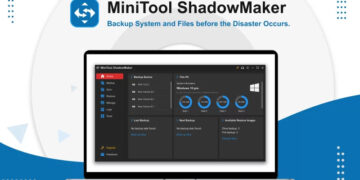The most popular operating systems in the world at the moment are Windows and MacOS. These two operating systems are completely different both in outlook and functionality. However, the difference between Excel for Windows and Excel for Mac is very little. If you create a workbook in Excel for Mac, it will open in Excel for Windows and work perfectly well. If you usually use Excel to perform simple tasks, you might fail to notice the differences between these two platforms. However, if you are an advanced Excel user, you won’t fail to notice the differences. Continue reading the comprehensive Excel comparison to discover the key differences in Excel on Mac and Windows.
Excel for Mac vs windows
1. Power Pivot

Power Pivot is a popular and advanced functionality that you’ll find on Microsoft Excel. It was first introduced in the 2010 version. This is an inbuilt feature for Excel 365 and 2016. It is a feature that allows users to import rows of data from different data sources into a single workbook. You can create relationships between them by linking heterogeneous data. Power Pivot enables you to formulate the data into charts, columns, Pivot Charts, and Pivot Tables. Analyzing data using this feature will help you make informed decisions without the help of IT.
The best part is you can do all these without affecting your computer’s performance. As you work on your Excel project using your Mac, you might close browser tabs by accident and waste time trying to remember where you left off. Most users don’t know how to get tabs back on Mac or restore recently closed tabs. Learning how to open recently closed tabs will help you complete your projects quickly and achieve your goals. Power Pivot is a key ingredient of Business Intelligence. When it comes to Mac, this feature is not available. While most users have requested the addition of this feature to effectively manage spreadsheets for Mac, we have not received any update from Microsoft about this issue.
2. Pivot Charts

Have you ever worked on a workbook that has thousands of rows and columns? If your answer is yes, you probably know what Pivot Tables are. When you are handling huge volumes of data, Pivot Tables come in handy as they allow you to squeeze them into a table of your choice. By doing this, you’ll change fields instantly and decide what data is shown and the ideal format to use. As a Mac user, you shouldn’t be worried since this feature is available on Excel for Mac. Pivot Tables are usually used with Pivot Charts. The purpose of Pivot Charts is to make data visualization easier. Pivot Chart is an interactive feature that you’ll need as an advanced Excel user. Unfortunately, it is not available on the Mac version.
3. Visual Basic for Applications

Visual Basic for Applications is a programming language of Microsoft Office. This means that it is not just used in Excel but also in many other Microsoft apps. You can develop macros in Microsoft Excel using Visual Basic for Applications. However, this requires advanced coding skills. Mac users will be pleased to know that Excel on Mac supports this programming language. However, Visual Basic for Applications on Mac has a lot of missing functions. And this makes it harder to use the version compared to that of Windows. One of the features that differentiates Excel for Windows and Excel for Mac is the user form.
There are user forms for Mac. However, you’ll have to use workbooks with existing user forms for them to run. If you need more controls, you’ll have to program to add them. Creating user forms on Mac is a long and tedious process. Even if you create user forms in Windows, you’ll only get 75 percent of the original size when you export them to Mac.
Conclusion
While MacOS and Windows look and operate differently, Excel for Mac and Excel for Windows are similar in many ways. There are a few key differences between these two platforms. Knowing them and finding out what you want to achieve will help you make the right decision. If you are an advanced Excel user, the Windows version will be suited for you. However, if you don’t need advanced functionalities, the Mac platform will help you achieve your goals. Which platform is suited for you and why?













































